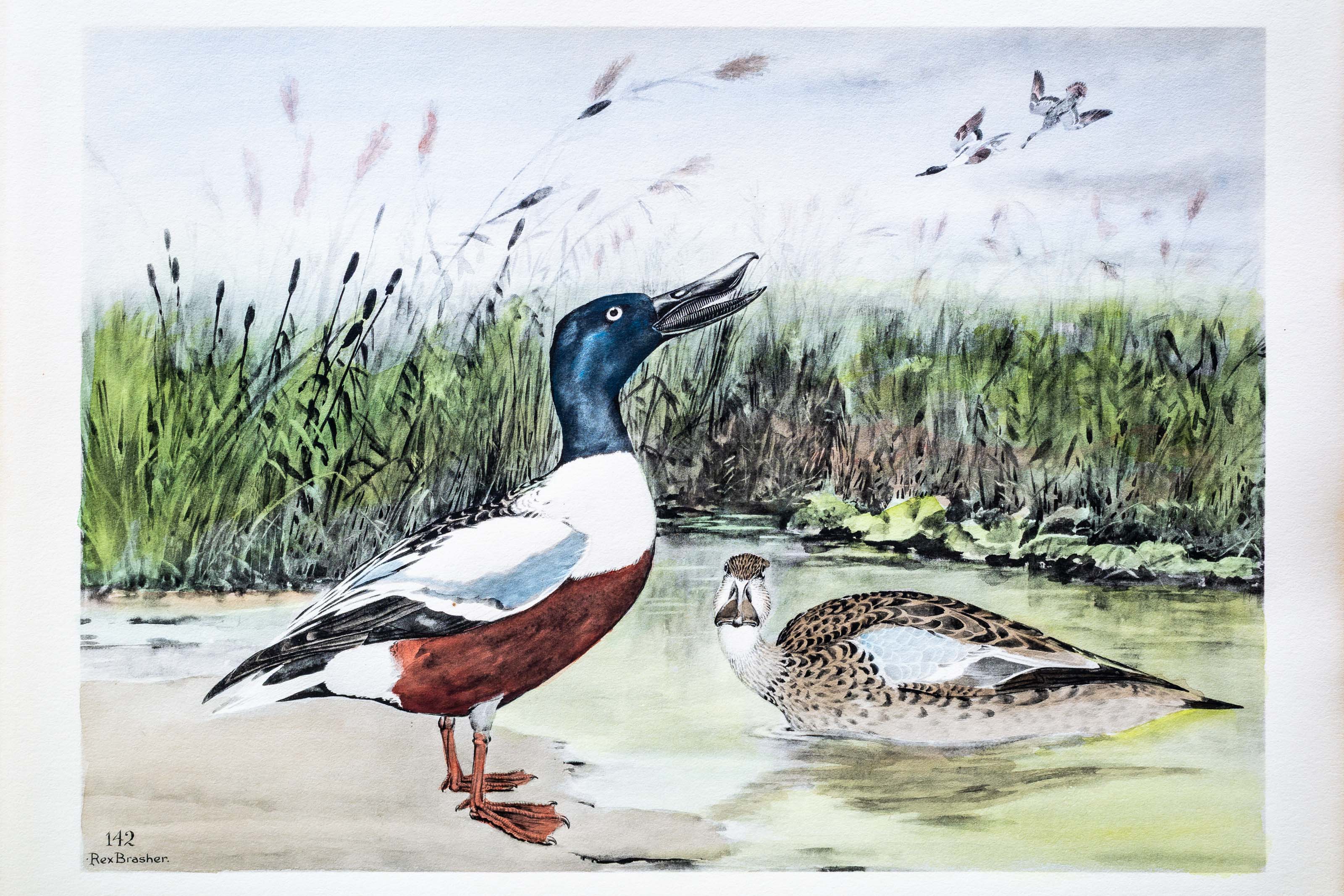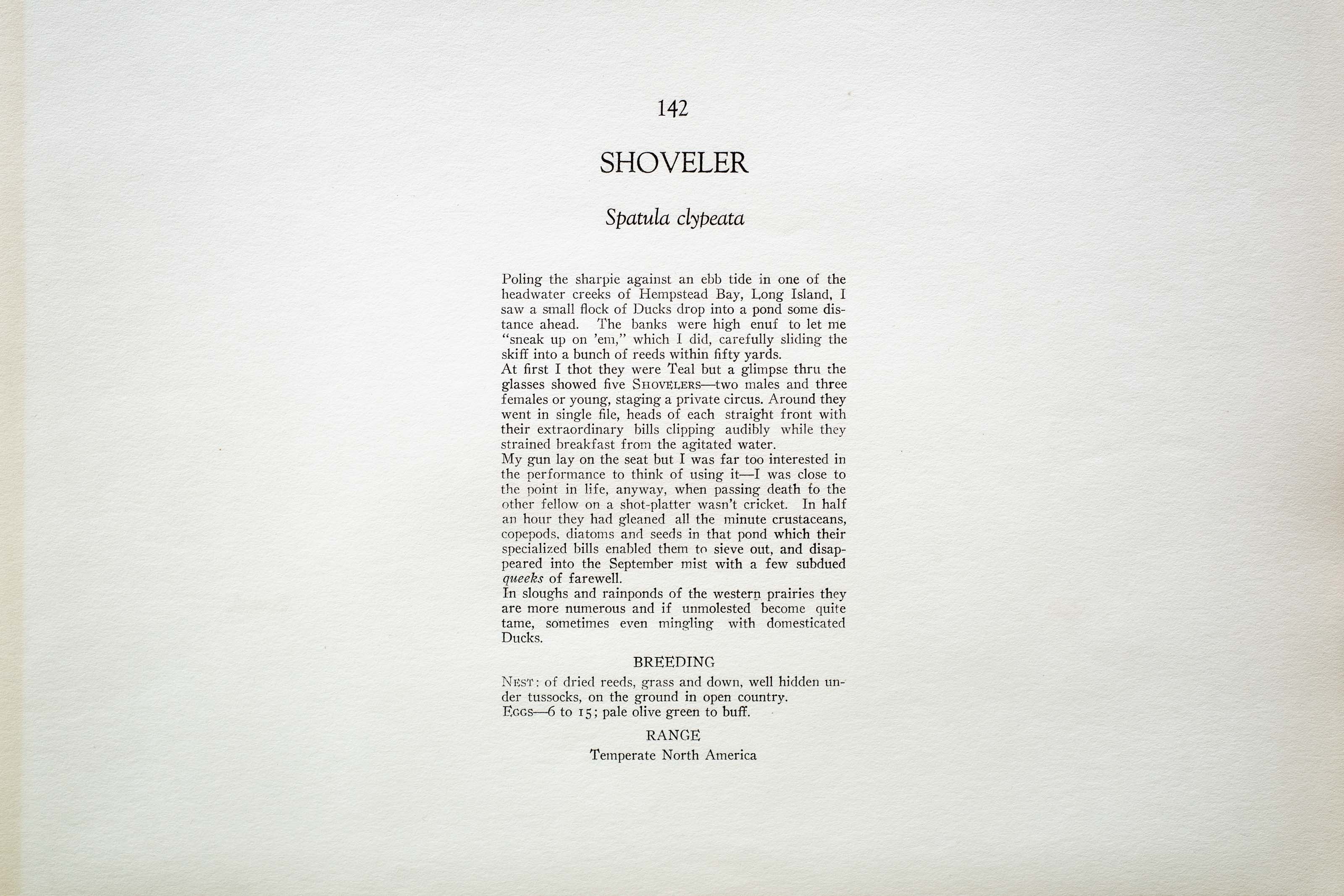






Unknown
1930
3
142
A team of dedicated board members, volunteers, and student interns has published every page in Volume 9. This volume includes 360 images of paintings and lyrical descriptions of birds, now available online for everyone to enjoy anywhere in the world. This is a monumental task. Each volume requires approximately 400 hours to photograph, edit, transcribe, catalog, and publish online. We need your support to complete this work.
If you're tech-savvy, have a good eye, are meticulous with details, and love structured data, please consider volunteering by emailing us at hello@rexbrasher.org.
We encourage all bird lovers and supporters to consider a monetary donation to support our mission to make Rex's work available for everyone. You can provide a one-time or recurring donation online.
Poling the sharpie against an ebb tide in one of the headwater creeks of Hempstead Bay, Long Island, I saw a small flock of Ducks drop into a pond some distance ahead. The banks were high enuf to let me "sneak up on 'em," which I did, carefully sliding the skiff into a bunch of reeds within fifty yards.
At first I thot they were Teal but a glimpse thru the glasses showed five SHOVELERS — two males and three females or young, staging a private circus. Around they went in single file, heads of each straight front with their extraordinary bills clipping audibly while they strained breakfast from the agitated water.
My gun lay on the seat but I was far too interested in the performance to think of using it — I was close to the point in life, anyway, when passing death to the other fellow on a shot-platter wasn't cricket. In half an hour they had gleaned all the minute crustaceans, copepods, diatoms and seeds in that pond which their specialized bills enabled them to sieve out, and disappeared into the September mist with a few subdued queeks of farewell.
In sloughs and rainponds of the western prairies they are more numerous and if unmolested become quite tame, sometimes even mingling with domesticated Ducks.
NEST: of dried reeds, grass and down, well hidden under tussocks, on the ground in open country.
EGGS — 6 to 15; pale olive green to buff.
Temperate North America.